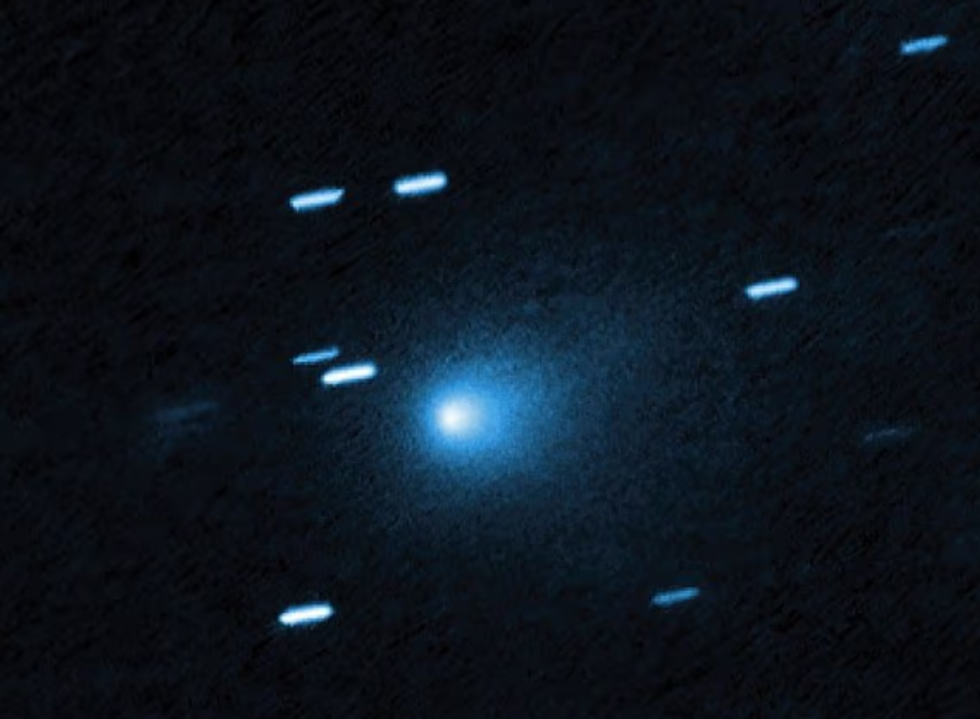Nasa reveals chilling new images of mysterious 'interstellar object' hurtling towards solar system

Scientists remain uncertain about the comet's origins
Don't Miss
Most Read
Latest
Nasa has unveiled remarkable new photographs from the Hubble Space Telescope showing an extraordinary celestial visitor speeding through our solar system.
The interstellar comet, designated 3I/ATLAS, was initially detected on July 1 when it was 420 million miles from the sun.
These unprecedented images represent the clearest views yet captured of the mysterious object as it journeys into the inner reaches of our solar system.
**ARE YOU READING THIS ON OUR APP? DOWNLOAD NOW FOR THE BEST GB NEWS EXPERIENCE**
The comet is travelling at an astonishing 130,000 miles per hour, establishing it as the swiftest interstellar object scientists have ever recorded.
Hubble's detailed observations have enabled astronomers to refine their understanding of the object's dimensions.
Initial calculations from the Vera C Rubin Observatory suggested the alien visitor measured approximately seven miles across.
Fresh analysis indicates 3I/ATLAS spans at most 3.5 miles in width, though it could be as compact as 1,000 feet.
Even at its smallest estimated size, this would establish it as the most substantial interstellar object discovered, dwarfing the second-largest by up to 14 times.
LATEST DEVELOPMENTS:

Nasa has unveiled remarkable new photographs from the Hubble Space Telescope
|NASA
The telescope's imagery has confirmed the object's nature as a comet composed of ice, frozen gases and dust, rather than solid rock.
A distinctive dust plume emanates from its sun-facing surface, with evidence of a tail forming behind.
The comet will make its nearest approach to the sun in late October, passing at 130 million miles - just within Mars's orbital path.
Earth faces no danger as the object will be positioned on the sun's opposite side during this encounter.
 An image of 3I/ATLAS was captured by the Hubble Space Telescope in July | NASA/HUBBLE
An image of 3I/ATLAS was captured by the Hubble Space Telescope in July | NASA/HUBBLE An artist's impression of what 3I/ATLAS may look like up close | NASA
An artist's impression of what 3I/ATLAS may look like up close | NASAThis marks only the third detection of an object arriving from beyond our solar system, following 1I/'Oumuamua in 2017 and 2I/Borisov in 2019.
The comet's exceptional velocity suggests it has journeyed through space for billions of years, accumulating speed through gravitational interactions.
Research indicates 3I/ATLAS could be eight billion years old, potentially predating our 4.6-billion-year-old solar system by nearly double.
Scientists remain uncertain about the comet's origins.
 The location of 3I/ATLAS when it reaches its closest point to our sun on October 30 | NASA
The location of 3I/ATLAS when it reaches its closest point to our sun on October 30 | NASADr David Jewitt from the University of California, who leads the Hubble observation team explained: "No one knows where the comet came from. It's like glimpsing a rifle bullet for a thousandth of a second. You can't project that back with any accuracy to figure out where it started on its path."
Multiple space observatories are preparing to study 3I/ATLAS, including the James Webb Space Telescope, TESS and the Neil Gehrels Swift Observatory.
Ground-based telescopes can observe the comet until September, when solar proximity will obscure it until early December.
Dr Jewitt anticipates more discoveries ahead: "This latest interstellar tourist is one of a previously undetected population of objects bursting onto the scene that will gradually emerge.
"This is now possible because we have powerful sky survey capabilities that we didn't have before. We've crossed a threshold."










